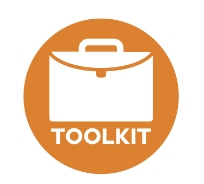
Edition #11
WHAT DOES IT MEAN TO LEAD?
After reading this edition: Graduates will be challenged to think about how they lead their classrooms in a way that caters for the needs of all students, including EAL learners. They will also consider the way they frame their thinking about their work..
PUBLISHED DATE: 13th November 2019

We are running a competition.
The first 20 people to read Edition 11, complete the feedback survey and then email a screenshot of at least one of your responses to ben@tln.org.au
will receive a free copy of
Glen Pearsall’s “Classroom Dynamics” book.

THE TEACHING YEAR
In this edition, Belinda talks about putting your hand up to help out with different school events. In addition to this, Belinda discusses the importance of organization and how, especially at this busy time of year, teachers need to manage their time
FEATURE ARTICLES:
In each edition we will feature articles written by various authors around two key areas.
1. Student Engagement as a Behaviour Management Strategy
2. Using Formative Assessment to Improve Learning
The two feature articles for this edition can be accessed from the links below.

LEADING IN AN INCLUSIVE CLASSROOM
FOCUS AREA: Student Engagement as a Behaviour Management Strategy
By: Gail Preston, a former Principal of a Special school and now supports teachers to work with students with additional learning needs
Leading an inclusive classroom means carefully considering the way we structure and organise our classrooms
ASSESSING STUDENTS WITH ADDITIONAL NEEDS - THE EAL CONTINUUM
FOCUS AREA: Using Formative Assessment to improve student learning.
By: Glenda McGrath & Katherine Roberts
Glenda McGrath is an experienced EAL and English teacher at North Geelong Secondary College.
Katherine Roberts is a Network Literacy Teacher, Middle Years Literacy and Numeracy Support Initiative
Graduates will have an overview of the assessment requirements for English as an Additional Language (EAL) learners, the EAL documents and resources, with which they should be familiar, and practical strategies to cater for EAL learners.

PLAYING WITH PODCASTS
In this edition of Playing with Podcasts, we talk to graduate teacher Emily Kidd and her Mentor Agata Gervasi from Fleminton Primary School.
In addition, we speak to Kirrily George, a member of the North Eastern Victorian Regional team about the HITS or High Impact Teaching Strategies.
Interview with a Graduate
Interview with a Mentor
Interview with an Expert

MAKING THE MOST OF MENTOR CONVERSATIONS
Assistant Principal Julie Andrews from North Geelong Secondary College writes about promotion opportunities for graduates as the move further into their careers as teachers.
UNDERSTANDING THE EDUCATION LANDSCAPE
In this article we explore some of the different roles outside and additional to the classroom teacher roles in schools.
WHAT WORKED FOR ME
Recent graduate teacher Noah Kim discusses approaches to complete the VIT inquiry.
SECURING YOUR FUTURE
This section is designed to help you consider the next steps in your career. In the next four editions, we will consider: Applying for the right positions (Edition 9), Presenting for interviews (Edition 10), Seeking help and assistance (Edition 11) and Considerations if employment is not immediate (Edition 12)
Victorian Institute of Teaching
The Victorian Institute of Teaching (VIT) is an independent statutory authority for the teaching profession, whose primary function is to regulate members of the teaching profession. It is a legal requirement for all teachers to be registered with VIT in order to be employed in a school or early childhood education and care service or Victorian children’s service.
The VIT specifies the requirements for moving from provisional to full registration on their website. After graduation, graduate teachers register with the VIT as provisionally registered teachers. To achieve full registration by the end of the second year of teaching, graduate teachers must provide the VIT with the evidence that they:
- have met the Australian Professional Standards for Teaching at the proficient teacher level using the inquiry approach, and
- have taught for a total of at least 80 days in one or more Australian or New Zealand schools or early childhood services.
Teacher mentors work with graduate teachers to undertake professional learning, which may include peer observation to continuously improve their teaching, collect evidence of their work and apply for full registration.
For further information see: www.vit.vic.edu.au/registered-teacher/moving-to-full-registration
eduPay
eduPay is the Department’s HR and payroll system. You can apply for leave and check your leave and pay information using eduPay Employee Self Service (ESS).
You can login to eduPay System via your school internet connection at: https://edupay.eduweb.vic.gov.au/
If you wish to access eduPay and ESS from an external location, such as from home, you can login at: https://ess.sras.eduweb.vic.gov.au/
Edumail
Edumail is the Department’s email system system. You can access your emails and digital communications using Edumail.
You can login to the Edumail System via the following linkt: https://www.edumail.vic.gov.au
Australian Education Union
The Australian Education Union (AEU) represent and advocate for all teachers, principals and support staff working in government schools, early childhood, TAFE, disability and adult education.
The AEU note that “graduate teachers face specific challenges at work” and have developed a specific resource for graduate teachers which includes a New Educators Network (NEN) and information about pay and conditions.
For further information see: https://www.aeuvic.asn.au/your-job/graduate-teachers
Victorian Curriculum and Assessment Authority
The Victorian Curriculum and Assessment Authority (VCAA) provides high-quality curriculum, assessment and reporting advice for all Victorian students. Engagement with the resources will depend on the learning area and level being taught.
The following links will provide graduate teachers with further information regarding:
- Victorian Early Years Learning and Development Framework (VEYLDF) – https://www.vcaa.vic.edu.au/Pages/earlyyears/index.aspx
- Victorian Curriculum F-10 – https://www.vcaa.vic.edu.au/pages/foundation10/f10index.aspx
- National Assessment Program Literacy and Numeracy (NAPLAN) – https://www.vcaa.vic.edu.au/Pages/prep10/naplan/index.aspx
- Victorian Certificate of Education (VCE) – https://www.vcaa.vic.edu.au/Pages/vce/index.aspx
- Victorian Certificate of Applied Learning (VCAL) – https://www.vcaa.vic.edu.au/Pages/vcal/index.aspx
The VCAA also implements Vocational Education and Training (VET) opportunities for senior secondary students and celebrate student achievement through excellence and awards programs, such as the Season of Excellence.
For further information see: https://www.vcaa.vic.edu.au/
FUSE
FUSE is a Department portal with a wide variety of teaching resources. You can use FUSE to:
- DISCOVER: filter, browse and discover resources for learning and teaching
- ENGAGE: immerse yourself in content with a range of great resource types, as a teacher you can even create groups and personalise resources
- SHARE: connect your learning and teaching with others by using the sharing features on all FUSE resources
You will need your eduMail details to access some features of FUSE, such as uploading your own content and sharing packages of resources.
For further information see: https://fuse.education.vic.gov.au/
In Our Classrooms
In Our Classrooms is an online space for teachers to find best practice approaches, evidence-based classroom resources, professional development opportunities and stories that celebrate the education profession. New articles are sent automatically in a newsletter each fortnight to all Victorian government school teachers, but In Our Classrooms is open to anyone interested in best practice in education and evidence-based teaching approaches.
For further information see: https://www.education.vic.gov.au/school/teachers/classrooms/Pages/default.aspx
To subscribe to In Our Classrooms: https://confirmsubscription.com/h/d/9DC75686B8867D58
The Victorian Teaching and Learning Model
The Victorian Teaching and Learning Model (VTLM) brings the framework for improving student outcomes (FISO) into the classroom. It creates a line of sight between the whole-school improvement approach and classroom practice.
The Victorian teaching and learning model consists of four components:
- A Vision for Learning helps create a unified set of values and beliefs to drive a high performance learning culture.
- The Practice Principles for excellence in teaching and learning (Practice Principles) are nine signature pedagogies which make the difference in improving student achievement and motivation.
- The Pedagogical Model describes what effective teaching looks like in the classroom and helps teachers apply the practice principles.
- The High Impact Teaching Strategies (HITS) are ten instructional practices that reliably increase student learning wherever they are applied.
For further information see: https://www.education.vic.gov.au/school/teachers/teachingresources/practice/improve/Pages/Victorianteachingandlearningmodel.aspx
The Literacy Teaching Toolkit
The Literacy Teaching Toolkit provides practical advice and high impact teaching practices that improve outcomes in reading, writing and speaking and listening. It includes specific resources for teaching literacy in Primary and Early Childhood as well as a guide to designed to support school leaders and teachers to understand and use the toolkit.
For further information see:
School Term Dates
You can access the School Term Dates and Holidays in Victoria through the following link:
https://www.education.vic.gov.au/about/department/Pages/datesterm.aspx?&Redirect=1
The Learning Series is designed for you, the Graduates and it is important that you provide feedback and share your ideas so that we can continue to develop and improve the content for our future issues.
Your feedback drives the ways in which we plan and present the content in each edition so please take the time to share your thoughts and ideas and play a role in driving this program.




